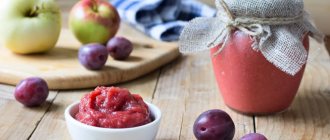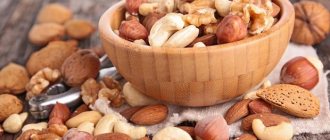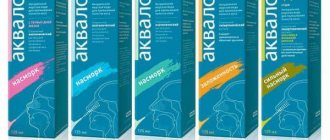Cottage cheese contains a huge amount of vitamins that the baby needs. But many young mothers do not know how to introduce cottage cheese into their baby’s complementary foods, or what amount will be most beneficial. Some parents believe that if the baby is breastfed, then introducing dairy products is not necessary.
When should the first complementary foods be introduced?
Doctors around the world recommend breastfeeding your baby for as long as possible. However, from 6 months of age, gradually introduce adult food. At the same time, do not stop breastfeeding.
If the child is on artificial nutrition, then the first complementary foods can be introduced as early as six months. But for babies who are fed breast milk, complementary foods are introduced no earlier than 8 months. If the baby is not gaining enough weight or has an insufficient amount of calcium in the body, then the doctor may recommend introducing cottage cheese from 7 months.
Before starting to introduce unfamiliar foods to their child, parents should consult with a pediatrician, who will indicate useful foods and administration rates.
Store product
Not everyone trusts the quality of industrial fermented milk products. But many mothers have successfully raised their children using store-bought products. Industrial cottage cheese for children comes in several types:
- milk (up to 10% fat content);
- creamy (10-15% fat);
- combined (6% fat);
- with fruit fillings.
Cream and milk cottage cheese differ in fat content. Fattier cottage cheese (creamy) is prescribed for children with low weight and high physical activity. In the combined cottage cheese, some animal fats are replaced with vegetable fats. This option takes into account the characteristics of the gastrointestinal tract of children with enzyme deficiency in relation to dairy products. Polyunsaturated fatty acids have a beneficial effect on brain function. Fruit additives are designed to make the taste of cottage cheese more pleasant for children. This product also increases appetite, which is suitable for children with low weight and reduced physical activity, since it contains a lot of carbohydrates.
It is difficult to overestimate the advantages of cottage cheese for a child as complementary food. We can only hope that the baby will like this healthy product and eat it with pleasure and appetite.
Video Photo
Rules and recommendations for first complementary feeding?
For a growing child's body, it is necessary to introduce fermented milk products, one of which is cottage cheese. This product is very high in calories and nutritious. For a digestive system that has not yet adapted, this is a rather unusual food due to its high protein content. There is several times more of it than in cow's milk.
Sometimes some parents think that the baby is tired of monotonous food and begin to introduce cottage cheese at an earlier age. However, such care can lead to undesirable consequences:
- To disruption of the digestive system;
- Increased insulin;
- Hypertensive diseases;
- Kidney problems.
Therefore, it is very important to introduce complementary foods in the baby’s second half of the year, when his body is already producing more enzymes, and the intestines are populated with beneficial bacteria for digesting food.
At what months should cottage cheese be introduced into complementary foods?
It’s worth weighing the pros and cons before introducing cottage cheese to your baby’s menu. The fact is that the benefits of the product directly depend on the age of the child.
Let's talk a little about the benefits of cottage cheese:
- Basically, cottage cheese is included in a child’s diet because it contains a lot of calcium (this should be known to almost every person), as well as phosphorus . These two components strengthen the child’s bones and future teeth;
- besides everything, it also contains a lot of protein, which acts as a building material in our body;
- and another plus is that cottage cheese is quite light and therefore easily digestible;
- and lactic bacteria even have a positive effect on intestinal function;
- vitamin A – so important for our vision;
- but vitamin D (by the way, you need to drink it with calcium for better absorption of both elements) acts as a preventive measure for rickets.
Cottage cheese has such valuable calcium and vitamin D.
But there are also contraindications for such a product:
- Sometimes benefits can show a downside, and that’s what protein will do. There is 6 times more of it in cottage cheese than in milk. And for an immature digestive system, this is heavy food. Therefore, the child’s ventricle will suffer, and stool may be disrupted;
- but that's not all - cottage cheese affects the kidneys. At an early age, it can put a lot of stress on it, causing problems in this system as well;
- all this will cause a failure in the metabolism, which has not yet fully formed. And this can cause diabetes in the future;
- Like many foods, cottage cheese is also harmful to some people. Namely, those who have personal intolerance. Therefore, children who are intolerant to milk or any dairy products in general should not be given cottage cheese early. It’s even better to postpone it after one year of age;
- after the first test, you need to check if he has problems with stool and be sure to examine all parts of the body for allergies. If there is any redness or itching, you should immediately consult a doctor.
Don’t feed your baby cottage cheese too early.
Set a time frame.
- Any newborn is interested in every little thing. He needs to know everything and everyone. But the most important element he must learn about is nutrition. Therefore, as soon as he begins to be interested in food, you need to immediately arrange the entire diet. Here’s a little hint for you - watch your baby’s urges when he starts “asking” you for cottage cheese.
- On store shelves you can often find jars of ready-made curd products and natural additives. On such jars it is usually written “6+”, that is, use is possible from six months. But this is acceptable if: you feed your baby artificial formula;
- rickets is observed or there is a warning;
- the child has anemia;
- He's not gaining weight well.
- on artificial feeding, cottage cheese should be introduced from 6-7 months;
Important: You cannot give cottage cheese to your baby before this time. Because the gastrointestinal tract of a child at this age is clearly not ready for the extra load.
The optimal age for cottage cheese feeding is 7-8 months.
Cottage cheese and its beneficial properties
This fermented milk product is truly necessary for children for health and proper development, as it is a storehouse of useful substances.
- Contains calcium and fluoride. Calcium is necessary for the development of the skeletal system, teeth and prevents the development of rickets. And phosphorus is responsible for brain activity;
- Vitamins of group A and B;
- Folic acid;
- Magnesium, potassium, zinc;
- Enriched with probiotics.
This is still far from a complete list of the benefits of this delicious product. Therefore, it should be present in the diet of every child.
Unleavened cottage cheese
This curd is prepared from hot milk, previously brought to a boil. Add 10% calcium chloride (they call it calcined - it contains a high calcium content). For 1 liter of milk take 19 ml (2 ampoules of 10 ml each) of calcium chloride. You can purchase the drug at a pharmacy. You can use dry powder: 3 g per 500 ml of milk. Then heat for a few minutes until the milk begins to curdle. Cool. The resulting mass is thrown onto a sieve to separate the liquid. Calcined cottage cheese can also be prepared with kefir. Store homemade cottage cheese for no more than 2 days in the refrigerator. If you overdose on calcium chloride, it will acquire a bitter taste.
Sequence of cottage cheese introduction
It is worth remembering that new food is still completely new to a child. He doesn’t know its taste, he’s unfamiliar with its consistency. Therefore, you need to introduce the curd gradually and observe the baby’s reaction. Don’t worry if after the first spoon your baby refuses the new food and even grimaces. You should just try giving him this useful product again after a while. Then he will taste it and will definitely eat it on both cheeks.
The first introduction of cottage cheese begins with 1 teaspoon in the morning. After a week, the introduction of a new complementary food is brought up to the age norm and subsequently one feeding can be replaced with this product.
By the end of the first year of life, the baby is recommended to consume this valuable product 3-4 times a week, 100 grams.
For the first complementary foods, you need to use well-ground cottage cheese, without lumps or additives. Today, children's curds can be found on store shelves, where you can choose them according to age needs.
For children in the first year of life, you need to purchase low-fat curds. If you introduce a fatty product, the baby’s body simply will not be able to cope and lead to unpleasant consequences.
Cottage cheese first complementary food
The issue of timely and correct introduction of certain products into the diet of children worries every parent without exception. Cottage cheese is the first complementary food that will have a positive effect on the child’s body and will contribute to its healthy growth and development. The main rule in this case is to follow all recommendations regarding its choice, timing and standards of administration.
Beneficial properties of cottage cheese for children's bodies
Cottage cheese, having low acidity, does not irritate the child’s gastrointestinal tract, therefore, of all the variety of dairy products, it is recommended to be introduced first into the baby’s diet.
This product is very useful and is a storehouse of useful substances, vitamins and microelements:
• high protein content in the product helps stimulate growth (histidine, a growth agent, is responsible for this) and the development of muscle tissue (building material for muscle development - phenylalanine) in childhood;
• the content of microelements such as phosphorus and calcium in its composition affects the formation of a healthy skeletal system and protects against rachitic diseases.
Eating cottage cheese in childhood is the key to the timely appearance of teeth in a child, correct posture and normal development of the chest;
• it is enriched with prebiotics (support the activity of microorganisms useful for the work of gastrointestinal tract) and probiotics (take part in the process of food digestion);
• promotes the supply of oxygen to the blood and an increase in hemoglobin levels.
Recommended timing of introducing cottage cheese as a first complementary food
According to the recommendations of pediatricians, children's cottage cheese can be introduced into the diet of babies when they reach the following age:
• 7 months – for children who are bottle-fed (these babies are accustomed to digesting formula based on cow’s or goat’s milk, so their gastrointestinal tract is ready to absorb a new product a little earlier);
• 8 months – for breastfed babies.
There are certain prerequisites, if present, the product can be offered to the child a little earlier than the described time frame:
- insufficient weight gain;
- predisposition to rachitic diseases or their presence;
- lack of Ca in the body;
- low levels of oxygen in the blood.
In this case, as prescribed by the pediatrician, the curd mass is introduced into the baby’s diet earlier.
Before a child reaches 6 months of age, this product is prohibited from being introduced into the diet.
Choosing children's cottage cheese
Currently, there are quite a lot of different curds on the baby food market that are suitable for introduction as first complementary foods.
Which cottage cheese to buy depends on the choice of the parents, but you should pay attention to the following important aspects:
• natural taste of the product without additives, however, if the baby refuses this option, you can add a little fruit puree or fresh fruits and berries to it;
• the packaging must indicate that this is a product specifically for baby food;
• the fat content of the curd should not exceed 3%;
• storage period should not exceed 2 days;
• the ingredients of cottage cheese for the first complementary feeding should not contain anything other than whole and skim milk and starter culture.
When choosing which cottage cheese is better, industrially made or home-made, preference should be given to the first option, since very strict requirements are imposed on the process of their production and such curds have the necessary consistency and fat content.
It is prohibited to purchase curd mass on the market in order to introduce it into the diet of children.
The technology and production conditions, its fat content and other parameters are outside the scope of quality control, and it is not recommended to offer such a product.
Scheme and rules for introducing cottage cheese in the first year of life
Cottage cheese should be introduced gradually into the diet of children.
Dr. Komarovsky recommends following a number of important rules:
• you can start complementary feeding with cottage cheese if the child is completely healthy and has no signs of nervous irritation;
• you should abandon the innovation 3 days before and 3 days after vaccination (to properly monitor possible allergic reactions);
• correctly introduce this type of complementary food as a supplement to the main type of food, either to porridge (for breakfast) or vegetable puree (for lunch);
• you should start introducing the product with half a teaspoon, gradually increasing the amount of curd (you should add 5 g of the product every 2 weeks).
It should be remembered that the maximum permissible daily intake for a child under 12 months of age should not exceed 50 g;
• if the introduction of a new type of complementary food is perceived normally by the child’s body, there are no allergic reactions, colic or disorders in the gastrointestinal tract, then cottage cheese can be offered to the child 2-3 times a week in the morning;
• at the age of 10 months you can combine complementary feeding with cottage cheese with a fruit component. Fruits contain vitamin C, which promotes better absorption of the curd mass;
• from 11 months you can combine cottage cheese and greens;
• after one year, it is allowed to offer children a combination of cottage cheese and starch-containing products (bakery products, potatoes, various cereals).
At the first symptoms that the child’s body is rejecting this type of complementary food (allergic rash, colic, diarrhea), you should immediately stop consuming it.
Useful tips for mothers: FIRST FEEDINGS
The scheme for introducing cottage cheese as the first complementary food to babies can be depicted as follows:
Possible negative consequences of introducing cottage cheese into children's diets
Despite all the obvious beneficial qualities of children's cottage cheese and its usefulness, situations may arise in which it is worth postponing the introduction of this component into the children's diet or suspending complementary feeding that has already begun.
This is due to the following factors:
• individual intolerance to milk and fermented milk products. It can manifest itself in various negative consequences:
- bloating;
- increased gas formation;
- diarrhea;
- allergic reaction on the face and body.
If you identify the very first signs of such milk intolerance, you should immediately stop introducing cottage cheese at this stage of the baby’s development and return to this process no less than 2 months after a mandatory consultation with your doctor;
- predisposition to allergies, usually associated with hereditary factors or improper functioning of the immune system of children.
Due to the fact that cottage cheese consists of 85% cow's milk protein, it is necessary to strictly monitor the norms for introducing this component into the baby's diet.
If the permissible values are exceeded, the child’s body perceives the protein as a foreign component and starts the process of its rejection.
In the case of a hereditary factor, allergic reactions are observed only at an early age, and as the child grows older, it goes away on its own without medical intervention.
With the correct introduction of cottage cheese into the diet, it becomes an important assistant to parents in maintaining health and ensuring its growth and development.
How to choose industrial curds?
Today on store shelves you can find everything you need for adequate nutrition for your baby. However, when choosing a children's product, you should pay special attention to the following points:
- Date of manufacture. You should always look at the production date and recommended shelf life of the product.
- Study of composition. It is important to carefully study the label to know exactly what the cottage cheese is made from and what additives it contains. For children of the first year of life, the content of dyes and flavors is not allowed.
- Age. Each dairy product should indicate the recommended age for consumption by your baby. The first curds will have a thinner consistency, but for older children they are offered with a non-uniform consistency.
- Storage temperature. Curds should be kept in refrigerators at a temperature not exceeding 4 C°. In other conditions, the product is simply not suitable for use by either children or adults.
- Packaging integrity. The packaging must not have dents or various damages.
- Cottage cheese color. It should be white with a slight yellow tint.
- Smell. High-quality cottage cheese should not have the smell of fermentation or a strong sour smell.
- Manufacturer. It is very important to choose products from a trusted manufacturer. If parents do not have such information, then it is worth consulting with a local pediatrician.
Never buy cottage cheese on the market, as such a product can be made without complying with any sanitary standards.
How to make cottage cheese for your child yourself?
Currently, it is not a problem to purchase cottage cheese in a specialized baby food store. However, at first, it is better to prepare this product yourself at home. Most kids love sweet cottage cheese made from a mixture of cream and kefir.
Important: remember that you should not store the prepared curd for more than a day, even in the refrigerator. It should only be fresh so as not to cause additional digestive problems!
It is advisable to prepare the product for the first complementary feeding only with 1% baby kefir. Since very little curd is required for daily feeding, it is enough to take no more than 200 ml of kefir. It needs to be poured into a spotlessly clean glass jar or, for example, into an enamel pan. The container should be placed in a water bath, and when the kefir begins to curdle, turn off the stove. The resulting curd needs to be cooled and placed in a fine sieve. If necessary, you can squeeze it further. If the product is not completely homogeneous, it is recommended to wipe it through clean gauze folded in several layers.
Please note: the average “yield” of the product is 50 g of curd per 100 ml of kefir.
Once you are sure that homemade cottage cheese does not cause digestive problems for your baby, you can use an alternative method of preparing the product for first feedings. You need to take 2 tbsp. l. kefir and 200 ml of pre-boiled milk, and combine these ingredients in a saucepan. Then the container is placed on low heat and wait until the mass curdles (this usually takes about 15 minutes). To remove excess whey, the curd is placed on cheesecloth. This product has a slightly sweet taste, so children eat it with great pleasure.
Advice! In pharmacies and specialized stores you can purchase the drugs Narine, Bifidumbacterin and Lactobacterin. They contain live bifidobacteria and lactic acid microorganisms. These remedies, used to treat intestinal dysbiosis, are used by many mothers as a starter for preparing homemade fermented milk products. To get tasty and healthy kefir, you just need to add them to boiled milk, put the container in a warm place, and wait about 1 day.
There is another very common recipe. A glass of milk is poured into a saucepan, brought to a boil, and 10 ml of calcium chloride solution purchased at the pharmacy is added. Then the container is immediately removed from the heat, and the curdled mass is discarded. Thus, extremely healthy baby food enriched with calcium salts is obtained.
If a child categorically refuses to eat unleavened cottage cheese, then to improve the taste of the homemade product, you can add a little fructose to it.
“Store” curds are divided into milk, cream and combined. Their fat content varies from 3.8% to 10-15%:
- Dairy products are recommended for children with low physical activity and (or) high rates of weight gain, as well as for children with diabetes. Their fat content does not exceed 5%.
- Creamy ones are good for active kids who are underweight.
- Combined fats contain vegetable fats, the polyunsaturated fatty acids of which are necessary for the formation and normal functional activity of the structures of the central nervous system.
Natural vegetable or fruit purees are added to some industrially produced curds - carrot, banana, pear, blueberry, etc.
Chumachenko Olga, pediatrician
9, total, today
( 164 votes, average: 4.55 out of 5)
Why does a newborn's chin shake?
Cystic fibrosis: symptoms, causes, treatment
Related Posts
Cottage cheese at home
There is nothing tastier and safer than homemade products. And if mommy can spare a little time, she can prepare cottage cheese herself and please her baby.
There are several recipes for homemade cottage cheese:
- Delicate cottage cheese. To do this, you need low-fat kefir and milk in equal proportions. It is best to buy these products on children's shelves. You need to take a clean saucepan and pour milk into it. Bring the milk to a boil over low heat and gradually pour in the kefir. The milk will begin to curdle almost instantly. Once all the milk has curdled, remove the resulting mass from the heat. Drain the liquid through a colander with a fine mesh. That's all, the cottage cheese is ready. The main thing in this recipe is not to overcook the cottage cheese on the fire, otherwise it will turn out dense.
- Cottage cheese in a water bath. For this you need a saucepan with water, a glass bowl and kefir. Place the saucepan on the stove, place a container on top and pour kefir into it. After a few minutes, the whey will begin to separate and the curd will rise to the top. After the excess liquid has drained, cottage cheese can be given to the baby.
As you can see, preparing homemade cottage cheese does not take much time.
However, it is worth noting that children do not really like this product in its pure form. Therefore, to improve the taste, you can add your baby’s favorite fruit puree to the cottage cheese. He will eat this dish with pleasure.
Always ensure hygiene and cleanliness of utensils. Compliance with sanitary standards will help avoid the entry and development of pathogenic bacteria and microbes.
How to introduce cottage cheese into your baby's diet?
Of course, for the first test and further use, kids only need a natural product. You can cook it yourself. By the way, you can see how to do this correctly in the material “How to make homemade cottage cheese?” But you can introduce store-bought cottage cheese, just choose products that are age appropriate, and take only trusted manufacturers.
Important: Always take products only from the refrigerator. Carefully examine the jar for any swelling or damage. And, of course, check the expiration date!
A few words about the variety of cottage cheese:
- a low-calorie milk product (3-5% fat) is ideal for babies who are overweight, as well as for inactive children;
- but if the baby has poor weight gain, then doctors may recommend a higher-fat creamy product (10-12% fat).
- an average or combination product of 6% is most often prescribed for the first acquaintance. Since it puts minimal stress on the child’s stomach, but at the same time is maximally nutritious and healthy;
- There are also different fillers and additives. But they are more suitable for one-year-old children, when a separate acquaintance with each component has passed.
When choosing a curd with filling, initially familiarize your baby with each component separately
. What points should you remember before starting complementary feeding:
- you need to add new food to the diet from 3 to 5 days, 0.5 or 1 teaspoon (if your child has an allergic reaction, stop feeding immediately!);
- The first sample should be given in the morning . From about 9 to 11, so that there is time to observe the reaction during the day;
- do not change your breastfeeding regimen;
- if the baby has just been ill, it is better to postpone the introduction of cottage cheese into the diet, as a reverse reaction may begin.
Important: If your child does not want to eat cottage cheese, forcing him to do so is strictly prohibited. First you need to find out the reason why exactly he doesn’t want to eat it. It is possible that the baby is simply not ready for such a product yet. He himself will want it, for example, at 10-12 months. But don't put pressure on the baby!
It is better to introduce the first sample in the morning.
Introducing the child to cottage cheese
- Some pediatricians insist that you should start complementary feeding with cottage cheese. But practice shows that children do not particularly like its consistency. And let’s not forget about possible negative consequences, so it’s safer to introduce your baby to vegetables first. They have a lighter texture. And after them, start introducing cottage cheese.
- Therefore, it is easier and more convenient to give a small portion of cottage cheese along with vegetable or fruit puree. But remember - about 2 weeks should pass after the previous introduction of a new product!
- If you decide to give cottage cheese in its pure form so that the baby learns to separate the taste qualities of each product, then it is still worth diluting it a little with baby kefir or your own milk. Also, put a portion of cottage cheese in a colorful bowl, so it will be more interesting for the baby.
- Be sure to warm up the cottage cheese! Children's necks are very weak, so even a small amount of cold food can cause redness. But do not do this in the microwave; it is best to do this in a water bath or simply leave it to “reach” naturally to room temperature.
Never force your child to eat cottage cheese at any age!
- If the baby does not want to try cottage cheese, there is no need to force it. It is better to postpone this procedure for a couple of days. After all, a child does not always happily accept something new.
- You should not feed your child cottage cheese every day. A maximum of 3 times will be enough. It is also not necessary to give it for several days in a row. But since the portions are tiny, do not forget that the product can be stored for no more than 1-2 days.
- Now a little more about the doses of cottage cheese. You need to start with half a teaspoon. If, after three days, the baby eats cottage cheese without whims, you can slightly increase the dose (add the same amount). Up to a year, a child should be given no more than 50 g per day.
So, let’s sum it up – cottage cheese, without a doubt, is necessary for a growing child’s body. But every body is individual, so you need to take the introduction of cottage cheese into your baby’s diet very seriously so that there are no negative consequences. Listen to the needs of the child’s body - it knows better when and what it needs to introduce.
Who is not recommended to eat cottage cheese?
Despite the fact that cottage cheese contains a lot of useful vitamins and microelements, for individual reasons it is not recommended for some children:
- Children prone to allergies to dairy products;
- Children with lacto-intolerance;
- If there is rapid overgrowth of the fontanel.
The decision to introduce cottage cheese into the first complementary feeding should be made directly by the local pediatrician, who monitors the child and can warn parents against introducing this product.
Unleavened cottage cheese
This curd is prepared from hot milk, previously brought to a boil. Add 10% calcium chloride (they call it calcined - it contains a high calcium content). For 1 liter of milk take 19 ml (2 ampoules of 10 ml each) of calcium chloride. You can purchase the drug at a pharmacy. You can use dry powder: 3 g per 500 ml of milk. Then heat for a few minutes until the milk begins to curdle. Cool. The resulting mass is thrown onto a sieve to separate the liquid. Calcined cottage cheese can also be prepared with kefir. Store homemade cottage cheese for no more than 2 days in the refrigerator. If you overdose on calcium chloride, it will acquire a bitter taste.
Important for every parent to know
Cottage cheese is very important in the diet of every baby. The content of protein, carbohydrates, calcium and probiotics are responsible for the formation of the skeletal system, promote growth and strengthen the immune system. In addition, cottage cheese improves the functioning of the baby’s gastrointestinal tract and saturates the body with all important vitamins.
This useful product will also help provide your baby with the necessary energy, because at this age they become more active and curious.
For the full development of the baby, it is very important to eat properly. Therefore, the consumption of cottage cheese should be present in the diet of every child.
Make sure the product is fresh and properly stored. If the baby has not finished his portion, then the remaining cottage cheese should be placed in the refrigerator.
During the first feeding, observe the baby’s reaction; if he refuses cottage cheese, do not insist that he eats everything to the end. Just try offering this unfamiliar product next time.
How much cottage cheese is given at the beginning of complementary feeding?
Foods high in fat and protein are absorbed by the digestive system somewhat slower than carbohydrates. Even the most delicate cottage cheese poses a rather serious burden for the baby’s kidneys and gastrointestinal tract. In this regard, it is better to start complementary feeding with minimal volumes. At first, the child should be given no more than half a teaspoon of cottage cheese. The baby is unlikely to immediately like this new product for her, and, most likely, she will not eat anything else. Cottage cheese should be given regularly - initially 2-3 times a week, and then every day.
Important: you should not feed your child cottage cheese after 6 pm, so as not to provoke colic in the stomach at night.
Cottage cheese is an additional product; it is given after the main feeding immediately before a portion of mother's milk or artificial milk formula.
The total volume of cottage cheese given per feeding is gradually increased from half a teaspoon to 30-50 grams. It is not recommended to give a larger quantity, even if the child really liked it.
Optimal portions by age:
- 6 months – 10-30 g;
- 7-9 months – 40 g;
- 10-12 months – 50 g.
Cottage cheese for first feeding should be prepared on the basis of milk or kefir with a low fat content (1%) . This is especially important if the baby has difficulty digesting lactose and animal fats. Only natural products that contain no preservatives or synthetic dyes or fragrances can be introduced into the diet. Any synthetic components can cause an allergic reaction and worsen the digestion process.
Please note: when the child has been receiving cottage cheese regularly for several weeks, you can start adding fruit puree to this product. Most babies like this mixture.
Store product
Not everyone trusts the quality of industrial fermented milk products. But many mothers have successfully raised their children using store-bought products. Industrial cottage cheese for children comes in several types:
- milk (up to 10% fat content);
- creamy (10-15% fat);
- combined (6% fat);
- with fruit fillings.
Cream and milk cottage cheese differ in fat content. Fattier cottage cheese (creamy) is prescribed for children with low weight and high physical activity. In the combined cottage cheese, some animal fats are replaced with vegetable fats. This option takes into account the characteristics of the gastrointestinal tract of children with enzyme deficiency in relation to dairy products. Polyunsaturated fatty acids have a beneficial effect on brain function. Fruit additives are designed to make the taste of cottage cheese more pleasant for children. This product also increases appetite, which is suitable for children with low weight and reduced physical activity, since it contains a lot of carbohydrates.
It is difficult to overestimate the advantages of cottage cheese for a child as complementary food. We can only hope that the baby will like this healthy product and eat it with pleasure and appetite.
Why is cottage cheese good for a baby?
The value of this product in baby food is due to its ability to be quickly absorbed. Cottage cheese contains the protein albumin, which is necessary for the growth of muscle fibers and the development of the child’s immunity. To strengthen the nervous system, it contains valuable amino acids - tryptophan and methionine, and for the development of the musculoskeletal system - calcium and phosphorus. This product contains more than 10 vitamins and folic acid. Cottage cheese is an excellent and effective remedy for the prevention of rickets.
However, moderation is good in everything. If consumed excessively, the product may harm the child's health. This is due to the high protein content in it and, accordingly, to the high load on the kidneys.
What kind of cottage cheese should I give my baby?
A ready-made store product (ideally labeled “Children’s” or “for children”) is considered safer for baby food. It is produced according to GOST standards, kids eat it with pleasure.
When purchasing, pay attention to the following points:
- on the inscription - it must contain the clarification “for baby food” and indicate the age of the baby;
- shelf life – short-term curds contain fewer preservatives;
- production date – no more than 48 hours from the time of release;
- no foreign additives.
Young mothers often try to replace a store-bought product with a village product. Doctors categorically deny this approach and warn that homemade cottage cheese can be included in the diet for children over 3 years old. The problem is related to the inability to comply with the necessary standards for baby food. But home-made cottage cheese from low-fat milk or kefir is quite suitable.
Homemade cottage cheese recipes for children
Making tasty and healthy cottage cheese for babies at home is not difficult; mothers of babies usually use several recipes:
- 200 ml of kefir is poured into an enamel bowl and placed on low heat. After folding the mass, it is transferred to a sieve to remove excess liquid. The remains are wiped with a spoon and offered to the child.
- Boil 200 ml of milk, cool, add 2 ml of calcium chloride. After stirring, bring to a boil again. The curdled mass is separated from excess liquid using a sieve. Grind the finished mass with a spoon. The entire process is described in detail here.
- A pack of kefir goes into the freezer overnight, and in the morning the contents are placed in a sieve. After 4 hours, the excess liquid will drain, the remaining curd mass is ready for use. You can make it for older kids using fermented baked milk.











